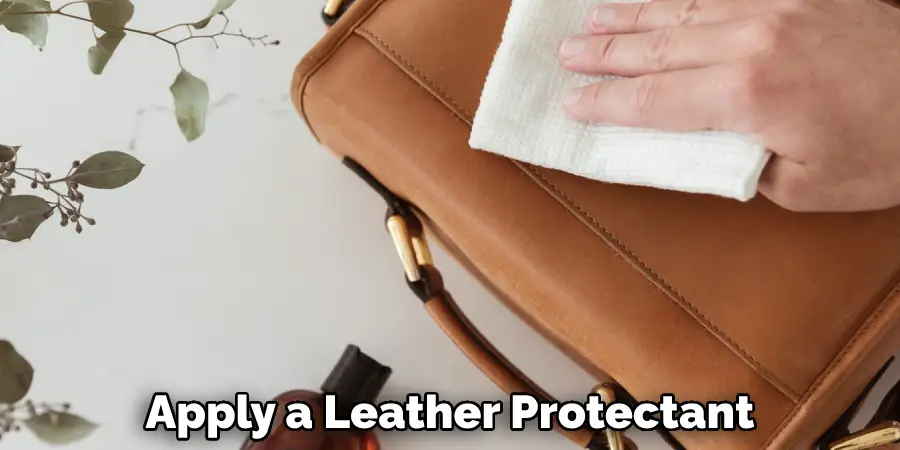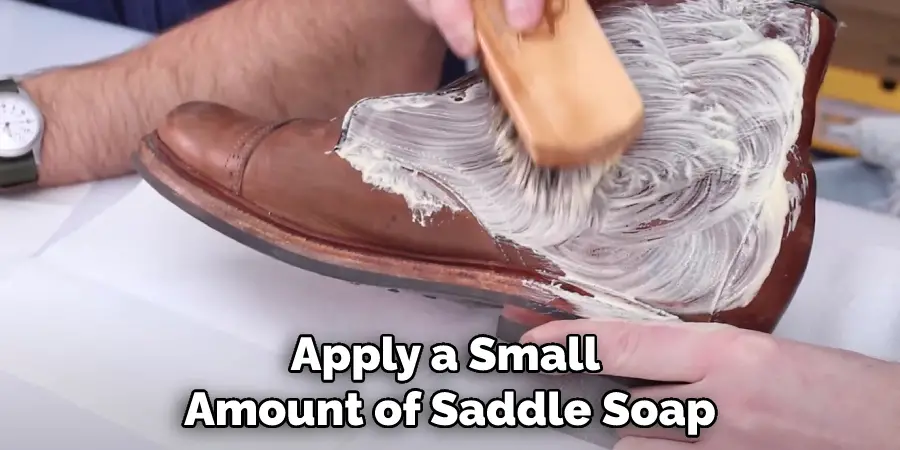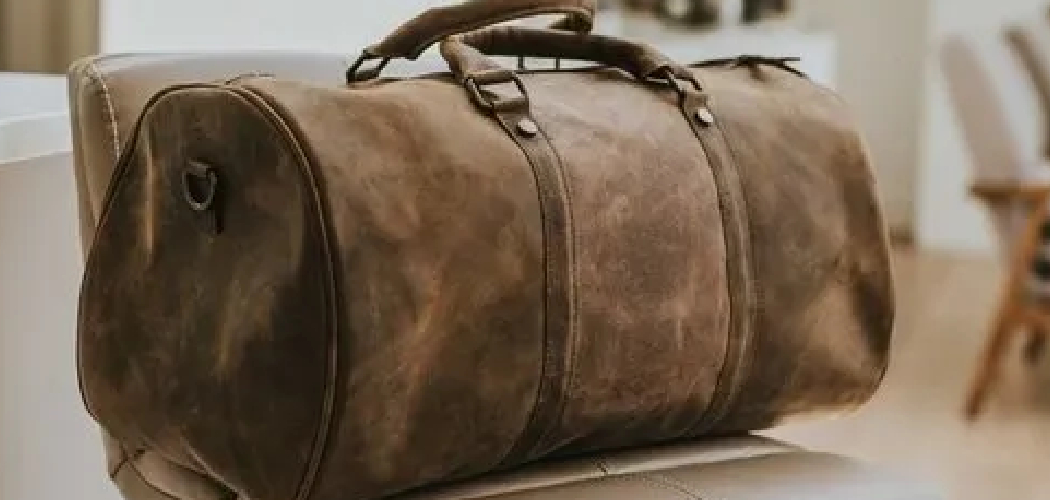Leather bags are an investment that you want to last for years, so it is important to take proper care of them. Buffing your leather bag will help maintain its appearance and keep the fabric soft and supple. Regular buffing can also help remove dirt or stains from the leather surface before they become harder to remove.

Leather bags are an ideal accessory for any occasion. They look great, last a long time, and in many cases, can be personalized to suit individual style preferences.
One of the key aspects of caring for leather bags is regular buffing, which helps to keep them looking their best for longer. In this blog post, You will learn in detail how to buff leather bag.
Step-by-Step Processes for How to Buff Leather Bag
Step 1: Gather the Materials
You will need
- A soft,
- Clean cloth,
- Leather cream, and
- A buffing brush.
Step 2: Use the Buffing Brush
Run the buffing brush over the leather bag in a circular motion to remove any dirt or grime. Make sure not to press too hard, as this may cause damage to the leather. Be sure to brush in the same direction as the grain of the leather to ensure an even application. The buffing brush should bring out extra shine and luster to your bag.
Step 3: Apply Leather Cream and Buff with Cloth
Next, use a small amount of leather cream on the leather bag and buff it in a circular motion using the cloth. This will help nourish and protect the leather. Allow the leather cream to dry for at least ten minutes before you start buffing.
Step 4: Buff with a Soft Brush
Using a soft brush, such as a chamois cloth or cotton cloth, buff the leather in a circular motion until it begins to shine and is free of any marks left behind from the buffing process.
Step 5: Apply Leather Protectant
Once you have achieved the desired shine, apply a leather protectant to the bag to help keep it looking its best over time. Make sure to read and follow the directions on the bottle for the best results. Using a soft cloth, buff the bag in a circular motion again to help distribute the protectant evenly across the leather.

Step 6: Allow Time to Dry
Allow the bag to dry for at least twenty minutes before you store it or use it again. It is important to store the bag in a cool, dry place when not in use. This will help prevent fading or cracking of the leather over time.
Step 7: Periodically Buff and Apply Leather Cream
Regularly buff the bag with a soft cloth and apply leather cream for maximum protection is important. Doing this once every few months will keep your leather bag looking and feeling its best.
Tips for How to Buff Leather Bag
- Always wear protective gloves when buffing a leather bag to avoid skin irritation or contact with cleaning chemicals.
- Ensure the area where you are buffing the bag is properly ventilated and free from flammable materials such as fabric, paper, or plastic.
- Use an appropriate wax-based cleaner for buffing. Some wax-based cleaners can be abrasive and may cause damage to the leather if used incorrectly.
- Always use a soft cloth or brush when buffing your bag, as this will help avoid scratches in the leather.
- Start with a small test spot before you buff the entire bag to ensure you are using the proper technique and that the cleaner is not too abrasive.
- Work in small sections when buffing to avoid streaks in the wax finish.
- Use a circular motion with your cloth or brush for best results, as this will help evenly distribute the wax-based cleaner on the leather bag.
- Allow the wax-based cleaner to dry fully before buffing it off with a soft cloth.
- When finished, use a leather conditioner or wax polish to help protect the leather from future damage and to keep its shine.
- Store your bag in a cool, dry place away from direct sunlight to help prolong its lifespan.

How Do You Maintain a Freshly-buffed Leather Bag?
After completing the buffing process, it is important to keep your leather bag looking fresh for a long period of time. To do this, you should regularly clean and condition the leather of your bag with high-quality products specifically designed for use on leather. Always remember to test any product on an inconspicuous area before using it on the entire bag.
Regularly dust and wipe down your leather bag with a clean, dry cloth to remove any dirt or debris that has settled on the surface. Waterproofing your bag is also important as this will help it resist water damage and keep it looking good for years to come. Apply a waterproofing spray in an even layer and allow it to dry completely before use.
Be mindful of the environment where your bag is stored—humidity, temperature, and sunlight can all take a toll on leather over time. If possible, store your bag in a climate-controlled area or somewhere away from direct sunlight. Always keep it stuffed with acid-free tissue paper or cotton fabric to help maintain the shape of your bag.
What Type of Cloth Should You Use When Buffing Your Leather Bag?
When buffing your leather bag, it is important to use the right type of cloth. Soft and lint-free microfiber or cotton cloths are best for buffing leather bags as they will not damage the leather in any way. Avoid using abrasive materials such as steel wool or rough sandpaper, as these can scratch and damage the leather.

Before beginning to buff, moisten the cloth with a mild leather cleaner or just water and wring it out so that it is damp but not dripping wet. This will help loosen any dirt or debris that may be clinging to the bag. Gently move the cloth in small circles over the entire surface of the bag until you have achieved the desired shine.
Once buffing is complete, apply a leather conditioner or wax to help protect the finish and keep it looking its best. With proper care and maintenance, your leather bag should remain beautiful for many years to come.
How Can You Prevent Creases and Wrinkles in Your Leather Bag While Buffing?
When buffing a leather bag, it is important to avoid creating creases or wrinkles in the leather. This can be done by working gently and evenly around the bag as you are buffing it. Use a soft-bristled brush or cloth, and always use circular motions when buffing.
It’s also important to take your time and be mindful of the pressure you are applying. Too much pressure can cause creases or wrinkles in the leather, while insufficient pressure will not provide desired results.

When buffing a leather bag, it is important to avoid using any abrasive materials such as steel wool or sandpaper. These materials can make the buffing process too aggressive and can cause irreparable damage to the leather. It is also important to avoid using any harsh chemicals, as these can permanently damage the leather and make it look dull.
Finally, it is important to use a conditioner or polisher when buffing a leather bag. These products can help preserve the leather and make it look shiny and new again. Be sure to follow the instructions on the packaging when using them, and wait until the product has completely dried before buffing your leather bag.
How Can You Prevent Scratches and Scuffs on the Surface of Your Leather Bag While Buffing?
To reduce the risk of scratches and scuffs on the surface of your leather bag while buffing, you should always use soft cleaning cloths or specialized polishing products specifically meant for leather. Never buff with rough materials, as this could damage the material.
Additionally, be sure to apply a protective cream or wax onto the surface of the bag to seal in the buffing and protect it from damage. When applying cream or wax, use a soft cloth and dab lightly over the surface to ensure even coverage.
Finally, cover any metal parts of the bag with a protective cloth, so they do not get scratched during the buffing process. Following these simple steps will help preserve the surface of your leather bag and ensure that it looks its best for years to come.
Is It Necessary to Hire Any Professional to Buff Leather Bag & How Much Will It Cost?
If your leather bag is made of a more delicate material, such as calfskin or a softer hide, it may be best to leave the buffing and cleaning to a professional. Leather treatment and restoration professionals will give the bag proper care. Depending on where you live, this service can range from $50 to $100.

If you do decide to buff your leather bag yourself, there are several steps you can take. First, remove any dirt or dust on the bag with a damp cloth. Then apply a small amount of saddle soap and rub it into the leather in circular motions. Once this is done, use a soft cloth to buff the leather until it shines. When finished, treat the leather with a leather conditioner to protect it from further damage and wear.
Regardless of how you buff your bag, always take extra care when cleaning or treating delicate leather. Doing so will help keep your bag looking its best for years to come. If you have questions about buffing leather properly, consult a professional.
Frequently Asked Questions
What Do You Use to Buff Leather?
There are a few different types of buffers that can be used to buff leather. Some people use a horsehair buffer, while others use a polishing cloth. Whichever method you choose, make sure you use a soft, lint-free cloth and apply enough pressure to the leather to remove any scratches or scuff marks.
Is Vaseline Good for Cleaning Leather?
Yes, Vaseline can be used to clean leather. It is important to apply a small amount of Vaseline to a cloth and then wipe the leather clean. Vaseline is an oil-based gel that is effective at removing dirt, dust, and other stains from surfaces. It is also non-toxic and safe to use on leather.
Which Oil is Best for Cleaning Leather?
Different oils may be better suited for different types of leather. Some oils that are commonly used to clean leather include:
1. Mineral oil: mineral oil is a light, oil-based oil that is effective at cleaning and conditioning leather. It is also non-toxic and safe to use on most surfaces.
2. Petrolatum: petrolatum is a thicker, liquid oil that is best suited for cleaning delicate or heavily soiled leather. It is also effective at protecting the leather from water damage and mold growth.
3. Lard: lard is a fatty oil that is often used to clean and condition leather because it has a long history of being used in the leather industry. Lard is also effective at preserving the suppleness and elasticity of the leather.
4. Coconut oil: coconut oil is a popular option for cleaning and conditioning leather because it is hypoallergenic, non-toxic, and has antimicrobial properties. Coconut oil also has a light scent that some people find pleasant.
What Not to Use on Leather?
There are a few things you should never use on leather surfaces, including wax, hair products, polish, and lotions. Wax can damage the leather surface, while hair products and lotions can cause irritation and even allergic reactions. Polish can also damage the leather surface, as it is a abrasive substance that can wear down the finish. Instead of using these types of products on your leather furniture, try using a gentle cleaner like soap and water or a Leather Conditioner. If you do need to apply a coat of paint to your leather furniture, make sure to use a paint that is specifically designed for leather surfaces.
Conclusion
Learning how to buff a leather bag is an easy task that can be done at home with a few simple steps. All you need are some materials, like beeswax and olive oil, and the right tools, such as a soft cloth or brush. By applying these products in circular motions and taking your time to distribute them evenly across the bag, you can make it look and feel like new.
Always use a gentle touch when buffing your leather bag to avoid damaging it. Regular care and maintenance allow you to keep your leather bag looking and feeling great for years to come. I hope this article has been beneficial for learning how to buff leather bag. Make Sure the precautionary measures are followed chronologically.

